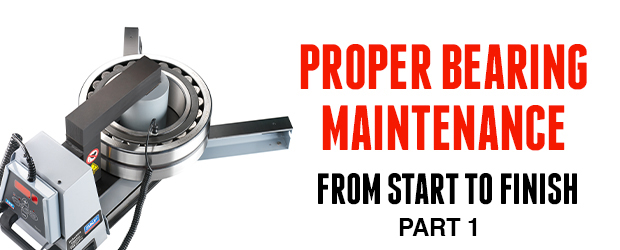Bearing Maintenance From Start to Finish (Part 1)
For any type of bearing in rotating machinery, applying best maintenance practices and using the correct enabling tools can help contribute to maximum bearing service life.
Bearings should always be properly stored, mounted, adequately lubricated when and where required, monitored, dismounted, and ultimately inspected to uncover root causes of any damage.
While particular applications will present unique factors influencing a bearing’s service life, the following maintenance-oriented guideline can substantially improve the life of bearing.
Making the initial right moves
From the outset, proper storage is critical. Bearings should always be stored in a cool, clean, low-humidity environment free of dust, shocks, and vibrations. (For these reasons, storing bearings directly on a floor should be avoided.) They should ideally be stored flat rather than on end and be kept in their original, unopened packages until just before mounting. If kept in a standing position, the likelihood of false brinelling (wear of the raceways and rolling elements caused by residual vibration) increases significantly. False brinelling is much less likely to occur in bearings laying flat.
In the cases of sealed or shielded types of bearings, operators should be cautious when storing them over long periods of time. The lubricating properties of the grease used to fill these types of bearings may deteriorate, causing potential lubricant-related problems when a system is up and running. (Most bearing manufacturers have specific shelf-life limits, based upon the greases used in their bearings.)
The importance of cleanliness cannot be over-emphasized. All bearings should be kept clean, because contamination and corrosion will shorten the life of any bearing.
When a bearing is ready to be mounted, maintenance staff should confirm that shaft and housing are clean, undamaged, and dimensionally accurate (with proper fit and tolerance); lubricant is clean and correctly specified; necessary tools and equipment are on hand, and safety precautions are in place.

